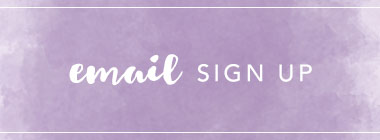
Choosing a Bible can be a daunting task, and yet, it’s one of the most important purchases we’ll ever make. To help you with your selection, we’ve assembled some crucial information to consider in your decision.
We hope it helps!
Bible Translations
English Bibles are available in just about every reading level and style. You may end up with more than one translation (helpful for comparison purposes), but it is most important you begin with a translation you can read and understand.
At one end of the spectrum, we have the word-for-word translations. This approach seeks to represent the original Greek and Hebrew as far as possible when it comes to original word order, grammar, and syntax. The word-for-word translations include the KJV, NKJV, ESV, and NASB.
On the other end of the spectrum we find the thought-for-thought translation. This approach is more concerned with putting meaning of the passage in colloquial language familiar to the reader. The thought-for-thought translations include The Living Bible, and The Message. Readers may find this translation more readable, especially good for new readers.
Somewhere between these two approaches we have the dynamic equivalent, or mediating translation. These translations seek to strike a balance between the two approaches outlined above. Some examples in this category are the NIV, HCSB, and the NAB.
To find a translation that works for you, we suggest you compare how each of the Bible translations interpret your favorite verses – see which speaks to you best.
For more help choosing a Bible that suits you, download our FREE Bible Guide
About Bible Types
Bibles come in a variety of sizes and formats. Many are targeted for specific people and special occasions and some even have additional material for devotion and study. Here is a quick list of some of the most common types of Bibles.
Study Bibles – these contain the biblical text along with additional material to help the reader understand the Bible better.
Reference Bibles – contains cross-references that relate verses with similar topics or words.
Parallel & Interlinear – a parallel Bible contains two or more translations, usually side-by-side, while an Interlinear Bible contains the original biblical language along with an English translation.
Wide Margin Bibles – also called Note-Takers Bibles. These pages have wider margins on each page for personal note taking.
Coloring Book Bibles – these new devotional Bibles are designed for you to take notes and color illustrations during your devotional time.
Compact & Pocket Bibles – these can be smaller take-along Bibles that fit in a purse, backpack, or briefcase.
Large & Giant Print Bibles – Bibles that feature larger than normal text, making it easier to read. They’re available for all types of Bibles, such as Study, Reference, Devotional & more.
To view more Bible types, download our FREE Bible Guide here!
A Word About Font Sizes
It is important to note that large and giant print Bibles will have a font size relative to the dimensions of the Bible itself. The smaller the size of the actual Bible, the smaller the font size will be. That’s why you may find some compact Bibles listed as large print when they have text size 9-point – it’s all relative to the individual Bible’s dimensions!
Choosing a Binding
Bible bindings can be made from many different materials with many different price points. Here is a quick guide to some common bindings you’ll find at Christianbook.com
Genuine Leather – high quality covers made from real leather from animal hides.
Bonded Leather – real leather pieces bonded together with adhesives and dyed and cut to look like leather. This binding is less expensive (but also less durable) than genuine leather.
Imitation Leather – constructed from a variety of synthetic materials. Similar to bonded leather, but this binding has more durability and can feel closer to genuine leather.
Hardcover – a hard, stiff cover, such as found on textbooks or other hardcover books. Less expensive than leather with better protection for the pages than a softcover.
Softcover – also called paperback. This binding is made from heavier paper glued together at the spine. This is the most inexpensive binding.
Cloth – a hardcover binding that has cloth or fabric covering
Synthetic – manmade materials such as metal or waterproof materials.
Our FREE Bible Guide includes a lot more information on choosing a Bible including
- an overview of general Bible terms
- a guide to the books of the Bible
- how to choose a Bible cover
- a History of the translations
- choosing a Study Bible
- and so much more!





